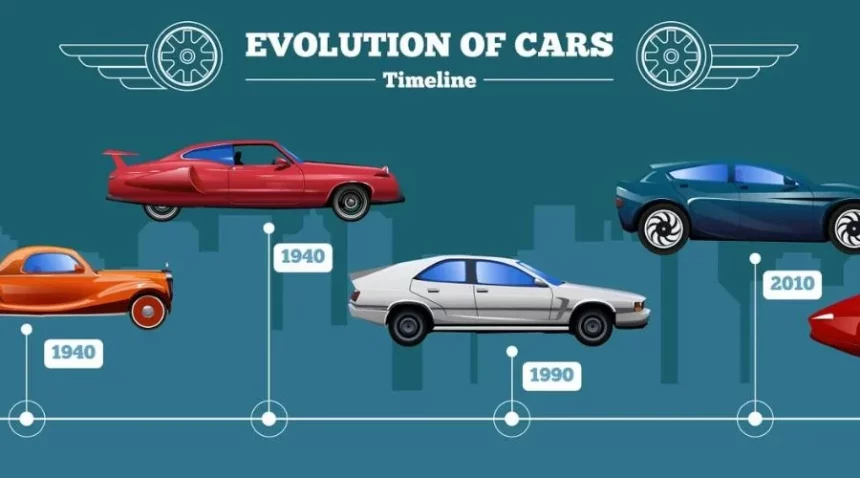Trucks have come a long way over the years. From their humble beginnings as basic workhorses to the modern-day machines that are capable of incredible feats of engineering, the evolution of truck design has been nothing short of remarkable. The classic trucks of the past were simple, sturdy and functional, but lacked the style and sophistication of their modern-day counterparts. However, as technology has advanced and designers have started to experiment with new materials and styles, the look and feel of trucks has been transformed. Today, trucks are not just utilitarian vehicles, but are also symbols of power, luxury and style. In this article, we will take a closer look at the evolution of truck design and explore how it has changed over the years, from the classic trucks of the past to the modern marvels of today. So, buckle up and join us on this journey through the history of truck design!
The Early Days of Truck Design
In the early days of truck design, trucks were primarily used as workhorses to haul goods, carry construction materials, or transport livestock. The early trucks were simple in design, with open cabs and exposed engines. They were often made from wood or metal and had solid rubber tires. The focus was on function rather than form, and these early trucks were not designed to be aesthetically pleasing.
The first trucks were powered by steam, but they were quickly replaced by gasoline-powered engines, which were more efficient and easier to maintain. In the 1920s, trucks started to become more specialized, with manufacturers producing models designed specifically for different tasks, such as dump trucks, tow trucks, and delivery trucks.
As technology advanced, truck design also evolved. In the 1930s, trucks started to become more streamlined, with manufacturers experimenting with aerodynamic designs to improve fuel efficiency. The first enclosed cabs were also introduced, providing drivers with protection from the elements.
The Rise of the Pickup Truck
The pickup truck was first introduced in the 1920s and quickly became a popular vehicle for farmers and ranchers. Pickup trucks were designed to be versatile, with an open cargo bed that could be used to transport goods or equipment. They were also used as personal vehicles, with families using them to go on camping trips or to haul recreational equipment.
The first pickup trucks were basic in design, with no frills or luxuries. They were often made from wood and had simple, functional interiors. As the demand for pickup trucks grew, manufacturers started to produce more specialized models, such as the Chevrolet Suburban, which was designed for families, and the Ford F-Series, which was designed for heavy-duty work.
In the 1950s, pickup trucks started to become more stylish, with manufacturers adding more chrome and flashy designs to attract buyers. The pickup truck became a symbol of American culture and was often featured in movies and TV shows. Today, pickup trucks are one of the most popular vehicles on the road, with manufacturers producing models that range from basic workhorses to luxury vehicles.
The Impact of World War II on Truck Design
World War II had a significant impact on truck design. During the war, trucks were used to transport troops, supplies, and equipment. Manufacturers were forced to produce large numbers of trucks quickly, and as a result, they had to streamline the production process and find ways to optimize efficiency.
The war also led to the development of new technologies, such as diesel engines and hydraulic brakes, which were incorporated into truck design. After the war, these new technologies were used in the production of civilian trucks, making them more powerful and efficient than ever before.
The 1950s and the Birth of the Modern Truck
In the 1950s, truck design underwent a major transformation. Manufacturers started to focus on style as well as function, and trucks became more luxurious and comfortable. The first air-conditioned trucks were introduced, and features such as power steering and power brakes became standard.
In the 1950s, the Chevrolet Cameo Carrier was introduced, which was the first truck to feature a fiberglass body. This was a significant innovation, as it made the truck lighter and more resistant to rust and corrosion.
The 1950s also saw the introduction of the pickup truck as a personal vehicle. Manufacturers started to produce models that were designed for families and recreational use, such as the Chevrolet Suburban and the Ford Ranchero.
The 1970s and the Age of Fuel Efficiency
In the 1970s, the oil crisis led to a renewed focus on fuel efficiency. Manufacturers started to produce trucks that were lighter and more aerodynamic, with smaller engines and better gas mileage. Features such as catalytic converters and electronic ignition systems were introduced to reduce emissions and improve efficiency.
The 1970s also saw the introduction of the first Japanese pickup trucks, such as the Toyota Hilux and the Nissan Patrol. These trucks were smaller and more fuel-efficient than their American counterparts, and they quickly gained popularity among consumers.
The 1990s and the Rise of the Luxury Truck
In the 1990s, trucks started to become more luxurious and sophisticated. Manufacturers started to produce models that were designed for both work and play, with features such as leather seats, premium sound systems, and advanced safety features. The first luxury pickup truck, the GMC Sierra C3, was introduced in 2001, and it set the standard for luxury trucks.
In the 1990s, trucks also started to become more powerful, with manufacturers producing models that were capable of towing and hauling heavier loads. The Dodge Ram 2500 and the Ford F-250 Super Duty were introduced in the late 1990s, and they quickly became popular among consumers who needed a heavy-duty truck for work.
The 21st Century and the Future of Truck Design
In the 21st century, truck design has continued to evolve. Manufacturers are producing trucks that are more fuel-efficient, with hybrid and electric models becoming more common. Trucks are also becoming more connected, with features such as GPS navigation, Bluetooth connectivity, and Wi-Fi hotspots becoming standard.
Trucks are also becoming more automated, with features such as lane departure warning, adaptive cruise control, and automatic emergency braking becoming more common. In the future, it is likely that trucks will become fully autonomous, with drivers no longer needed behind the wheel.
The Importance of Truck Design in Branding
Truck design is an important part of branding for manufacturers. A well-designed truck can help to differentiate a brand from its competitors and can create a strong emotional connection with consumers. The design of a truck can also convey the values and personality of a brand, such as ruggedness, reliability, or luxury.
Truck design is also important for businesses that use trucks for advertising purposes. A well-designed truck wrap can help to attract attention and create a memorable impression on potential customers.
결론
Truck design has come a long way over the years. From the basic workhorses of the past to the luxurious and sophisticated vehicles of today, the evolution of truck design has been nothing short of remarkable. As technology continues to advance, it is likely that truck design will continue to evolve, with new materials, features, and styles being introduced. One thing is for sure – trucks will continue to be an essential part of our lives, whether we use them for work or play.



